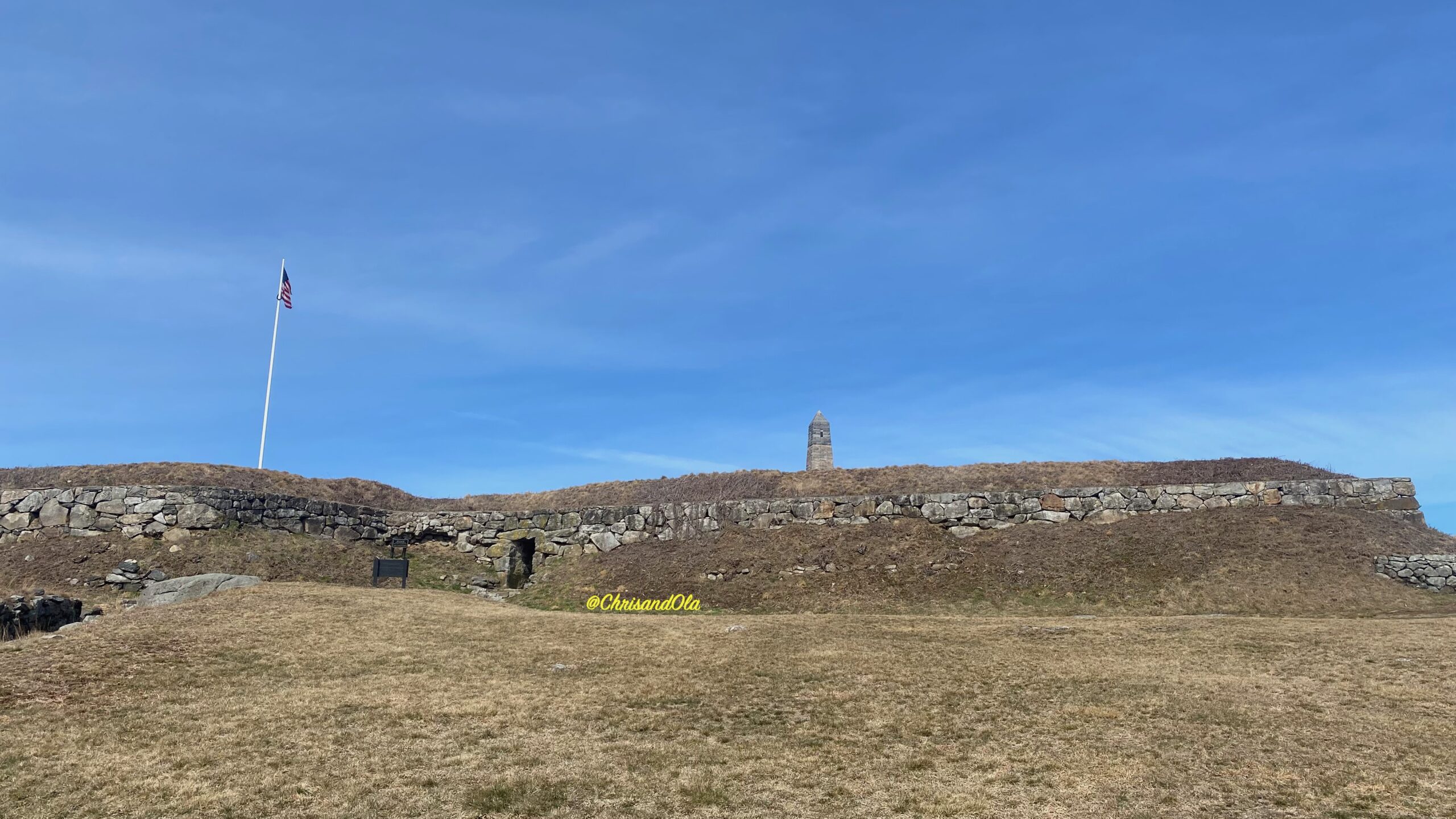Last weekend, we had the opportunity to visit two amazing places that showcase the history and nature of New England: Dr John Champlin Glacier Park in Westerly, Rhode Island and Fort Griswold in Groton, Connecticut. Both are within an hour’s drive from each other and offer stunning views, fascinating stories, and plenty of trails to explore.
Dr John Champlin Glacier Park is a 134-acre preserve that features a unique landscape formed by glaciers during the last ice age. The park has ponds, sand barrens, ridges, and kettles, which are depressions left by melting ice blocks. The park also overlooks Winnapaug Pond, Block Island Sound, Block Island, and Long Island. You can learn more about the geology and ecology of the park from the informational plaques along the trails. The park is named after Dr John Champlin, a prominent physician and philanthropist who donated the land to the Westerly Land Trust in 2004.
We spent a couple of hours hiking around the park, admiring the views and the variety of plants and animals. We saw deer, rabbits, birds, butterflies, and even a turtle. The trails are well-marked and easy to follow, but some are steep and rocky, so wear sturdy shoes. There are two parking areas for the park: one off of Tom Harvey Road and another on Kettle Close off Shore Road. The latter one is closer to the shore and has a picnic area.
Fort Griswold is a former American defensive fortification that played a key role in the early stages of the American Revolutionary War. It was built in 1775 to protect the port of New London, Connecticut, which was a supply center for the Continental Army and a base for privateers who attacked British ships. In September 1781, British troops under Benedict Arnold (yes, that Benedict Arnold) raided and burned New London and attacked Fort Griswold in the Battle of Groton Heights. The British eventually broke into the fort and killed or wounded most of the defenders, including Colonel William Ledyard, who was stabbed with his own sword after surrendering.
The fort was rebuilt and used in several other conflicts, such as the War of 1812 and the Civil War. Today, it is maintained as Fort Griswold Battlefield State Park by the Connecticut Department of Energy and Environmental Protection. You can walk around the fort walls and see the cannons, barracks, tunnels, and monuments. There is also a museum that displays artifacts and exhibits related to the battle and the fort’s history. One of the highlights of the park is the Groton Monument, a 135-foot granite obelisk that honors the fallen defenders. You can climb to the top of the monument for a panoramic view of the Thames River and New London.
We spent about an hour at Fort Griswold, learning about its history and exploring its features. The museum is open from Wednesday to Sunday from 9 am to 5 pm from May to October. The fort grounds are open daily from sunrise to sunset year-round. There is no admission fee for either. The park is located on Park Avenue in Groton.
We really enjoyed visiting these two places and we highly recommend them to anyone who loves history and nature. They are both well-preserved and well-managed by their respective organizations. They also offer a glimpse into the past and present of this beautiful region.
If you want to get an idea of what you can expect before visiting, check out our video below where we visited both locations!

